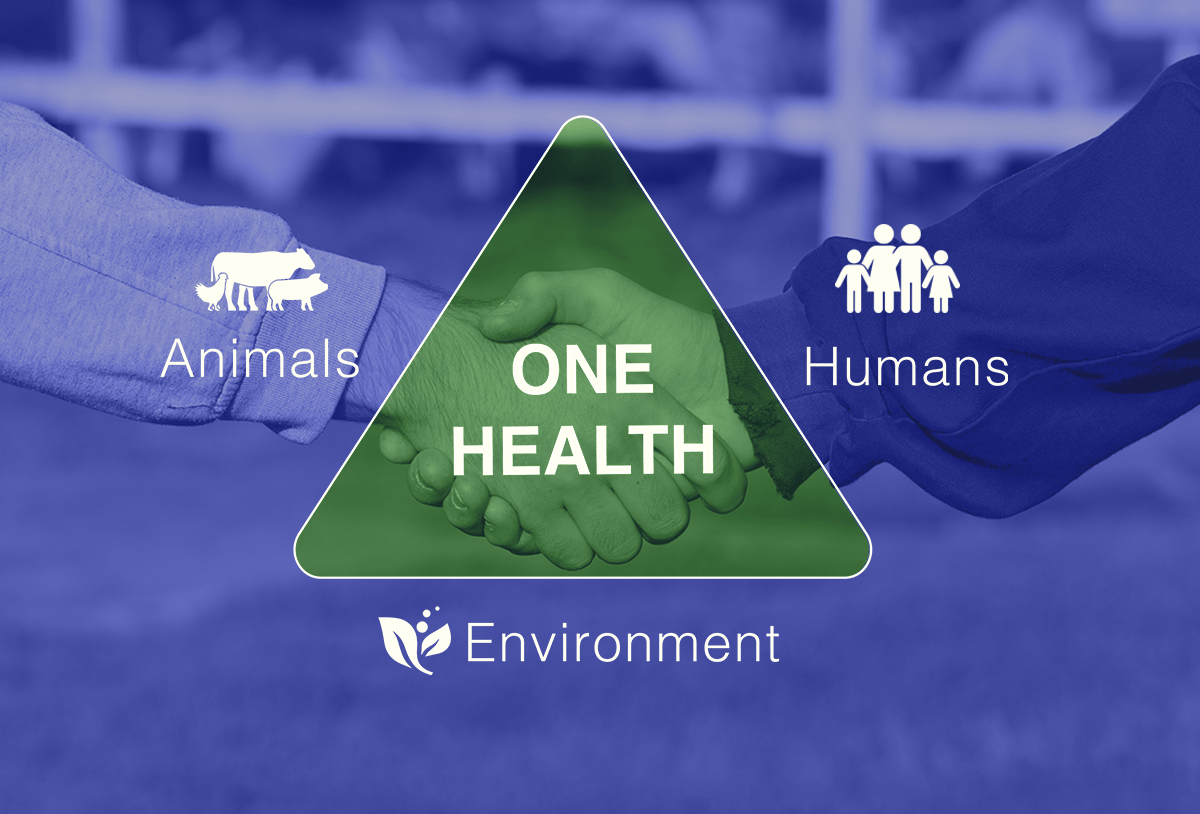How is Your Health Connected to People Around the Globe?
One Health is an international initiative exploring the links between animal health, human health, and our environment. Experts increasingly recognize that successful public health interventions often require the cooperation of human, animal, and environmental health communities.
It’s not a new concept, but it has become more important in recent years. This is because many factors have changed interactions between people, animals, and our planet. These changes have led to the emergence and reemergence of several diseases.
I’ve always admired the approach advocated by Dr. Lonnie King, former Dean of the Ohio State University College of Veterinary Medicine. In accepting the Global One Health Award a few years ago from an international veterinary group, Dr. King had this to say: “We are in an era of unprecedented change. Population growth, food safety and security, human and animal health concerns, and a host of other global forces are changing the needs of society with respect to veterinary medicine.”
During my time with Ohio Farm Bureau, I worked on a variety of food and animal issues. One of them involved algae blooms in Lake Erie prompting concerns for both humans and animals and their contributions to the problem. At member meetings, some probably wondered why a veterinarian was talking with them about water quality. It’s an example of how animal and human waste management can impact the environment.
Addressing antibiotic resistance also requires a One Health approach. The responsible use of antibiotics by doctors and patients, as well as by veterinarians and farmers, helps reduce the risk of antibiotic resistance. Responsible use of antibiotics is also a way people can help animals have less of an environmental impact. When left untreated, sick animals can die, which then need to be replaced. With more animals to feed, more grain must be grown, which requires more fertilizer, water and land. Allowing farmers and veterinarians to prevent disease, or treat sick animals if necessary, conserves natural resources, which is good for the environment, and for all of us.
Here’s the big picture. If properly implemented into future generations, One Health has the potential to help protect and save millions of lives. The goal is to encourage the collaborative efforts of multiple disciplines working locally, nationally, and globally to achieve the best health for people, animals, and our environment.
Here’s one example of how it can work.
Rift Valley Fever (RVF) was a big problem in East Africa. In 1997, it killed 500 and sickened another 90,000 people. Many animals such as cattle, sheep and goats also died, causing economic hardship for people who relied on them for food and as a trading commodity. People were infected through mosquitos or contact with infected animals and the worst outbreaks occurred in years of unusually heavy rain, providing an ideal environment for mosquito growth.
Here’s how a multi-disciplinary approach arrived at a solution.
Researchers discovered that heavy rains were caused by changes in ocean temperature which affect weather patterns. NASA used satellite images to monitor and predict when RVF outbreaks were likely.
But, how do you break the chain of disease transmission?
Vaccinating people wasn’t an option because there is no RVF vaccine. Killing mosquitoes with pesticides wasn’t a good option because it’s time-consuming and potentially exposes people to other health risks. Vaccinating animals was the answer. By preventing RVF in animals, fewer humans would be infected from mosquitoes or from direct contact with sick animals. Vaccinations also protect the animals that the people rely on for food and as a source of income.
As you can see, effective collaboration by different fields can help public health professionals prevent disease outbreaks in animals and better protect the health of people. Here in the U.S., the Centers for Disease Control (CDC) uses the One Health approach by working with physicians, veterinarians, ecologists, and many others to monitor and control public health threats and to learn about how diseases spread among people, animals, and the environment.
As the global population continues to increase, this interconnection becomes even more significant. It’s estimated that at least 75 percent of emerging and re-emerging diseases are either spread between humans and animals or carried from infected animals to others through insects.
The One Health approach is the right thing to do. By keeping animals healthy, we help keep families healthy and help feed a growing world.
I welcome your thoughts and questions. Please feel free to send me an email at AskDrDorman@pahc.com or call me at 844-288-3623. You can also browse our Resource Library to learn more about this important topic.


